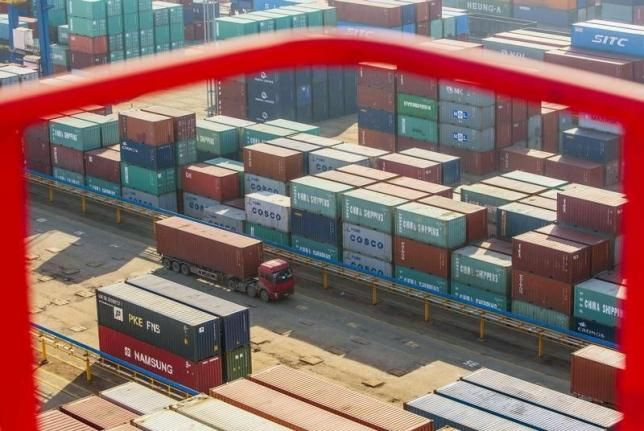China April Exports Unexpectedly Contract, Import Slide Worsens, More Stimulus Seen

China's exports unexpectedly fell 6.4 percent in April from a year earlier, while imports tumbled by a deeper-than-forecast 16.2 percent, fueling expectations that Beijing will quickly roll out more stimulus to avert a sharper economic slowdown.
The dismal trade performance raises the risk that second-quarter economic growth may dip below 7 percent for the first time since the depths of the global financial crisis, adding to official fears of job losses and growing levels of bad debt.
"This is bad. I expect an interest rate cut this weekend," said economist Tim Condon at ING in Singapore.
"This is going to make 7 percent (GDP) growth hard to attain. It looks like the weakness in the first quarter wasn't transitory. It's persistent."
The central bank has lowered interest rates and banks' reserve requirement ratio (RRR) thrice in three months since November to stoke the economy, and most analysts had expected it to loosen policy again on both fronts in coming months.
Policy insiders told Reuters this week that China's leaders have been caught off guard by the sharpness of the downturn, and are likely to resort to fiscal stimulus to revive growth after a flurry of monetary policy easing has proved less effective than hoped.
Imports have been weaker than exports, falling 16.2 percent in April from a year earlier, according to data released by the General Administration of Customs on Friday, highlighting tepid domestic demand as the world's second-largest economy slows.
Analysts polled by Reuters had expected exports would rise 2.4 percent in April after a 15 percent plunge in March, and predicted imports would fall 12 percent after a 12.7 percent drop the previous month.
UNCERTAIN OUTLOOK
Economists at Nomura expect annual economic growth to slow to 6.6 percent in the second quarter from 7 percent in the first quarter, and are pencilling in three more 25-basis-point rate cuts and two more 50 bps cuts in banks' reserve requirements for the rest of the year, which would mark the central bank's most aggressive easing campaign since the global crisis.
Buffeted by lukewarm foreign and domestic demand, China's trade sector has wobbled in the past year, adding to pressure on the slowing economy and unsettling policymakers.
Earlier this week, China's trade minister said the devaluation of currencies by some countries has led to sharp gains in the yuan, hurting the competitiveness of Chinese exports.
The yuan has gained against major non-dollar currencies in recent months, leading to its rise on a trade-weight basis.
But Premier Li Keqiang has ruled out a devaluation, even as the economy faces headwinds.
While some exporters said they have not felt the impact of a rising yuan, thanks in part to the growing popularity of currency hedging options, few doubt that sales would suffer in coming months if the yuan sustains its ascent.
"If the demand in other countries does not improve, the declining trend in exports will continue, maybe even worsen," said Wang Jianhui, an analyst at Capital Securities in Beijing.
"On the import side, most infrastructure projects led by the government haven't begun yet, so demand for energy and steel is very low."
China had a trade surplus of $34.13 billion for the month, widening from $3.08 billion in March.
Chinese Vice Premier Wang Yang was quoted by Xinhua state news agency as saying last month that authorities must arrest China's export slowdown lest it further dampen economic growth.
China's trade grew 3.4 percent in 2014, missing the government's growth target of 7.5 percent by more than half.
The government has lowered its growth target for 2015, with combined imports and exports expected to rise around 6 percent.
China will release inflation data on Saturday, with factory output, retail sales and investment numbers expected next week.
© Copyright IBTimes 2024. All rights reserved.





















